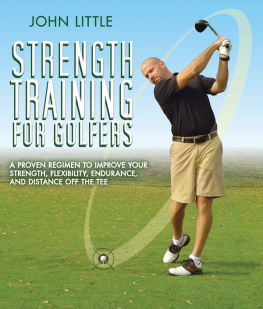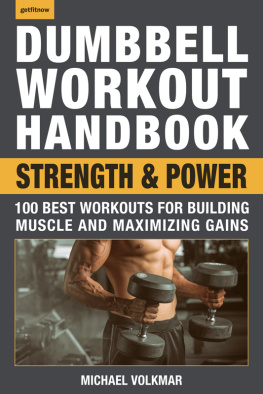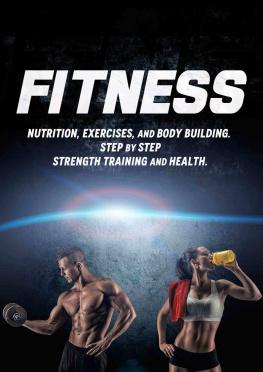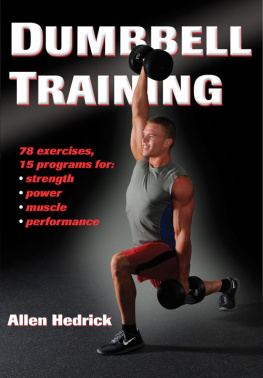Fitness Sutra
STRENGTH TRAINING WITH DUMBBELLS
50+ Exercises to Build Muscle, Burn Fat
& Sculpt your Body at Home
Dr. Monika Chopra
www.fitness-sutra.com
Dr. Monika Chopra, 2019
Published by FitSutra Wellness Pvt Ltd, 33, Prachi Residency, Baner Rd., Pune-411045, India
No part of this book may be reproduced, transmitted, or utilized in any form or by any means, electronic or mechanical including photocopying or recording or by any information storage and retrieval system, without written permission from the author.
Although I am a Physiotherapist (PT, for those of you in the USA) and a trained Yoga teacher, my suggestions through this book do not establish a doctor-patient relationship between us. This book is not intended to be a substitute for the medical advice of physicians. You should regularly consult a physician in matters relating to your health particularly with respect to any symptoms that may require diagnosis or medical attention. I advise you to take full responsibility of your safety and be aware of your physical limits. Before practising the exercises described in this book, be sure that your equipment is well maintained. Do not take risks beyond your level of flexibility, aptitude, strength, and comfort level.
This is a work of nonfiction. No names have been changed, no characters invented and no events fabricated. The information provided within this Book is for general informational purposes only. While I have tried to keep the information up-to-date and correct, there are no representations or warranties, expressed or implied, about the completeness, accuracy, reliability, suitability or availability with respect to the information, products, services, or related graphics contained in this book for any purpose. Any use of this information is at the reader's own responsibility. I do not assume and hereby disclaim any liability to any party for any loss, damage, or disruption caused by errors or omissions, whether such errors or omissions result from negligence, accident, or any other cause.
Contents
CHAPTER 1
Introduction to Strength Training
Importance of Strength Training
- Strength training helps to reverse the loss of muscle mass which decreases with age naturally.
- Increased muscle strength improves your posture with upright spine & helps in attaining that V shaped body.
- A muscular, leaner & fitter body helps in your notion of Self-Image and leads to higher self-esteem & confidence.
- Strength training helps to increase bone density thereby reducing the risk of osteoporosis & fractures.
- Strength training helps to maintain joint flexibility and can reduce the symptoms of arthritis.
- As you gain muscle, your base metabolic rate tends to increase, thus making it easier to control your weight. This single factor can prevent a lot of potential issues related to obesity & being overweight - first & foremost of which is Diabetes.
- Strength training when paired with cardiovascular training helps in strengthening alternative arterial passages in your heart thereby reducing blood pressure and risk of blocked arteries.
- Strength training can help alleviate chronic pains like low back pain & joint pains.
- Strength training helps in reversal in mitochondrial deterioration that typically occurs with aging.
- Strength training improves the movement of lymphatic fluid through your system thus aiding in efficient removal of toxins.
- Strength training releases endorphins in brain. Endorphins act as our natural defences towards stress and depression. Endorphins are the reason why you feel happy & satisfied after a productive session of strength training.
- Strength training reduces oxidative stress thus reducing risks of cancer.
- Strength training helps you to get good night sleep thus having overall positive impact on your health.
Safety tips for Strength Training
- Warm up routine is very important before any strength training regime. It helps to increase blood flow to joints and muscles, prepares joints for performance by improving joint mobility, activates your core and hip muscles to provide better stability to spine and hips.
- Using proper form during strength training is very important to minimize injuries and maximize gains. The exercises should be practised with lower resistance first to master the form for that routine and then only should you move to increased resistance.
- Working at right tempo helps to maximize the strength gains with momentum not interfering with the motive of exercise. Always count slowly as you perform the exercise, thus controlling movement and give a slight pause in between as you reach at maximum resistance effect. Do not let the momentum of the movement carry on till the end. Never lose control of the movement.
- Keep breathing slowly and never hold your breath during exercise to avoid build-up of your blood pressure. Generally, you should e xhale as you work against resistance & inhale as you release.
- Keep challenging the muscles by slowly increasing the resistance . The choice of resistance should be such that at the end of one set of repetition the targeted muscle or group of muscles should be tired (but not too tired) and the exercise can still be performed in proper form. When you feel the resistance becoming easier, add more resistance or add a set.
- Ideally you should workout all major muscle groups of your body 2-3 times a week. This can be done by dividing regimes into upper and lower body muscles components and doing them on separate days, repeating each component at least 2-3 times a week or doing full body exercises 2-3 times a week.
- Tiny tears occur in muscle tissues due to strength training which need to be healed. These tears make the muscles grow stronger after re-modelling. At least 48 hours should be given to each muscle to recover before further strength training.
- Cut back on the exercise (reduce resistance or reduce the sets) if you feel significant pain, dizziness, breathlessness during the session or feel tired throughout the day.
- Always keep a slight bend in knees and elbows while straightening arms and legs during exercises. Locking these joints at the extreme ends of your resistance exercise can lead to injuries.
- Cool down with full body stretches after the session. 5-10 minutes cool down exercises should be good.
CHAPTER 2
Why Exercise with Dumbbells
Dumbbell exercise program is an effective, convenient, and an inexpensive way of doing the strength training workout. You do not necessarily need an elaborate gym setup to do the exercises. It can easily be done at home or your workplace.
In this book, through step by step instructions, I will guide you to the safe and effective methods of using Dumbbells for Strength Training. Emphasis will be laid on the correct grasping of the dumbbell, proper start position and correct movement of the particular body part for the desired results.
Finally I will guide you to beginners, intermediate and advance training regimes which will help you to set desired goals.
Why to Choose the Correct Dumbbell Weight:
Choosing the correct dumbbell weight is very important to get the desired results from the exercises. Less dumbbell weight may lead to ineffective outcomes towards muscle strengthening, endurance etc. On the other side a very heavy dumbbell can lead to muscle strains and joint injuries.
How to Choose a Correct Dumbbell Weight:
To understand how to choose the dumbbell weight we first need to understand how exercises are performed. Dumbbell exercises are done as sets of repetitions. A repetition is completing one exercise and a set is a group of repetitions.













